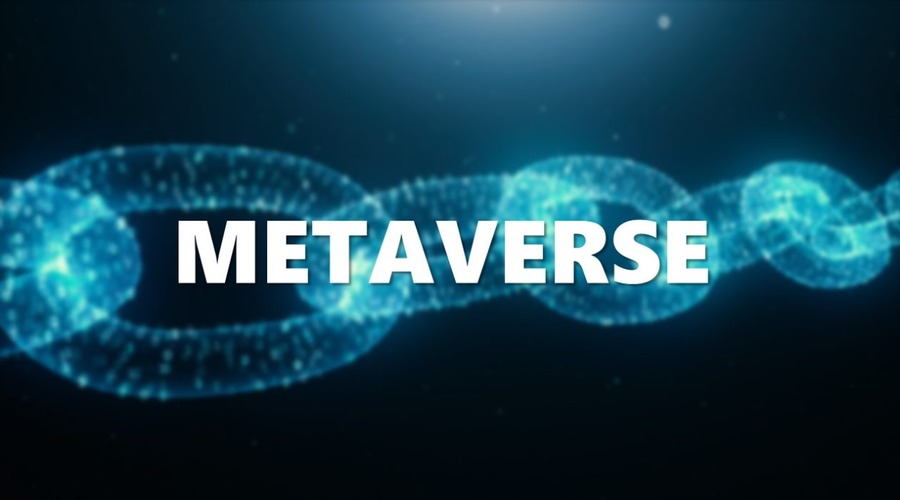Building a Decentralized Metaverse: Opportunities and Challenges

The metaverse is an imagined virtual space where users can interact with each other in a 3D digital environment. It is the next step in the evolution of the internet, where people can engage with each other and technology in a more immersive and interactive way. With the growing interest in blockchain technology, the idea of a decentralized metaverse is gaining traction. In this article, we will explore the opportunities and challenges of building a decentralized metaverse.
What is a Decentralized Metaverse?
A decentralized metaverse is a virtual world built on blockchain technology. It is a peer-to-peer network where users can interact with each other without the need for intermediaries. In a decentralized metaverse, users have complete control over their data and assets, which are stored on the blockchain. This means that users can trade virtual assets with each other, without the need for centralized exchanges.
Opportunities of a Decentralized Metaverse
1. Ownership of Virtual Assets
In a decentralized metaverse, users have complete ownership of their virtual assets. This means that users can buy, sell, and trade virtual assets without the need for intermediaries. This opens up new opportunities for creators, who can monetize their creations selling them directly to consumers.
2. Interoperability
A decentralized metaverse is not limited to a single platform or application. It is a network of interconnected virtual worlds that can communicate with each other. This means that users can move their virtual assets from one world to another, without the need for intermediaries. This creates new opportunities for developers, who can build applications that interact with multiple virtual worlds.
3. Digital Identity
In a decentralized metaverse, users have complete control over their digital identity. This means that users can create multiple identities, each with their own reputation and history. This creates new opportunities for businesses, who can use this data to provide personalized products and services to their customers.
4. Innovation
A decentralized metaverse is an open platform that encourages innovation. Developers can build applications that interact with the metaverse, creating new experiences for users. This creates new opportunities for entrepreneurs, who can build businesses around the metaverse.
Challenges of a Decentralized Metaverse
1. Scalability
A decentralized metaverse requires a large number of users to be successful. This means that the network needs to be scalable, to handle a large number of transactions. This is a challenge, as the current blockchain infrastructure is not capable of handling the scale required for a decentralized metaverse.
2. Interoperability
Interoperability is both an opportunity and a challenge for a decentralized metaverse. While it allows for the seamless movement of virtual assets between worlds, it also creates security risks. Interoperability requires the use of smart contracts, which can be vulnerable to attack.
3. User Experience
A decentralized metaverse needs to provide a user experience that is on par with centralized platforms. This means that it needs to be easy to use, intuitive, and visually appealing. This is a challenge, as decentralized platforms are often more difficult to use than centralized ones.
4. Regulation
Regulation is a challenge for a decentralized metaverse, as it operates outside of traditional legal frameworks. This creates uncertainty for users and businesses, who may be unsure of their legal rights and obligations.
Technical Considerations for Building a Decentralized Metaverse
In addition to the opportunities and challenges of a decentralized metaverse, there are also several technical considerations to take into account when building such a platform.
1. Consensus Mechanisms
A decentralized metaverse requires a consensus mechanism to ensure the validity of transactions and to maintain the integrity of the network. Proof of Stake (PoS) and Proof of Work (PoW) are two popular consensus mechanisms used in blockchain networks. PoS is considered more energy-efficient than PoW and is therefore more suitable for a decentralized metaverse.
2. Smart Contracts
Smart contracts are self-executing contracts with the terms of the agreement between buyer and seller being directly written into lines of code. In a decentralized metaverse, smart contracts are used to facilitate transactions between users. Solidity is a popular programming language used to create smart contracts on the Ethereum blockchain.
3. Interoperability Protocols
Interoperability protocols are used to enable communication between different blockchain networks. The most popular interoperability protocol is the Interledger Protocol (ILP), which is used to connect different payment systems. ILP enables transactions between different blockchains converting assets into a common currency.
4. Decentralized Storage
Decentralized storage is essential for a decentralized metaverse, as it ensures the security and availability of user data. IPFS (InterPlanetary File System) is a popular decentralized storage protocol used to store and retrieve files in a peer-to-peer network. It allows users to store files on multiple nodes, ensuring redundancy and availability.
Use Cases for a Decentralized Metaverse
While a decentralized metaverse is still in its early stages of development, there are several potential use cases for such a platform.
1. Gaming
Gaming is one of the most promising use cases for a decentralized metaverse. A decentralized metaverse would enable players to buy, sell, and trade virtual assets, creating new revenue streams for game developers. It would also enable cross-game compatibility, allowing players to use their virtual assets in multiple games.
2. Social Media
A decentralized metaverse could also be used for social media, enabling users to interact with each other in a more immersive and engaging way. Users could create their own virtual spaces, where they could host events and interact with their followers. This would create new opportunities for influencers and content creators.
3. Education
A decentralized metaverse could also be used for education, creating a more immersive and engaging learning environment for students. Students could interact with each other and with virtual teachers, creating a more personalized learning experience.
Conclusion
In conclusion, a decentralized metaverse has the potential to transform the way we interact with each other and technology. While there are significant technical and regulatory challenges to overcome, the opportunities are vast. As the technology develops, we will see new use cases emerge, and new innovations that we cannot yet imagine. Building a decentralized metaverse could be the next step in the evolution of the internet, and the possibilities are endless.
I’ve been involved with cryptocurrency for three years. I have been a vocal advocate for the people and an active part of the community. I am well-known for my book “Crypto Revolution: An Insider’s Guide to the Future of Money” and blog “The Crypto Chronicles.” In addition, I frequently contribute to CoinDesk, one of the top news websites for cryptocurrencies. I write as well as invest actively in a number of bitcoin initiatives.
